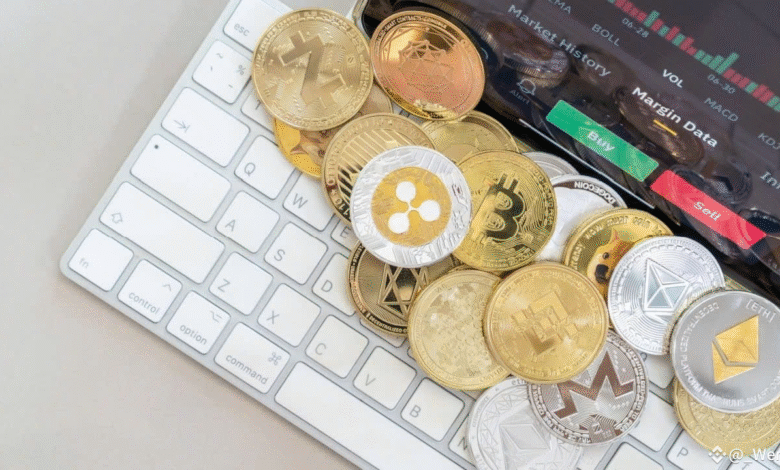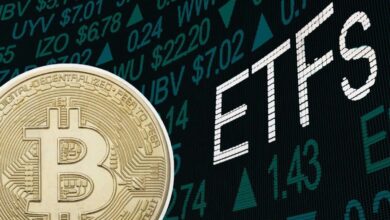New Altcoin Buying Guide Avoid 8 Deadly Mistakes

The altcoin market in 2025 presents unprecedented opportunities, with thousands of alternative cryptocurrencies vying for investor attention. However, this explosive growth comes with significant risks that can devastate even experienced traders. Recent studies show that beginners continue making the same costly mistakes, including chasing pumps, overleveraging, and falling victim to FOMO trading.
Altcoin investing has evolved beyond simple speculation into a sophisticated landscape requiring strategic thinking, risk management, and deep market understanding. With altcoin season actively unfolding in August 2025, driven by declining Bitcoin dominance, investors face both tremendous opportunities and dangerous pitfalls.
The cryptocurrency market rewards those who approach altcoin trading with discipline and punishes impulsive decisions. Whether you’re a newcomer exploring digital asset investment or an experienced trader seeking to refine your strategy, understanding common mistakes is crucial for long-term success. This comprehensive guide examines eight deadly mistakes that consistently trap investors and provides actionable strategies to avoid them.
From FOMO trading to inadequate security measures, these mistakes cost investors millions annually. By learning from others’ costly errors, you can navigate the volatile altcoin ecosystem more effectively and build a profitable crypto portfolio. The difference between successful altcoin investors and those who lose money often comes down to avoiding these fundamental mistakes.
1. Falling Victim to FOMO (Fear of Missing Out)
Understanding the FOMO Trap in Altcoin Trading
FOMO trading represents one of the most destructive forces in cryptocurrency investing. This psychological phenomenon leads to overtrading, impulsive buying decisions, and significant financial losses. When investors see an altcoin suddenly surge 50% or 100%, the fear of missing out triggers irrational decision-making.
The Psychology Behind FOMO in Cryptocurrency Markets
The crypto market operates 24/7, creating constant pressure to act quickly. Social media amplifies this pressure, with influencers and traders showcasing massive gains from altcoin investments. This environment breeds anxiety and impulsive behavior that contradicts sound investment strategies.
FOMO-driven trading typically follows predictable patterns. Investors notice a coin trending on social media, see dramatic price increases, and immediately purchase at or near peak prices. Market volatility often triggers panic selling, converting temporary paper losses into permanent financial hits.
Strategies to Overcome FOMO in Altcoin Investing
Successful altcoin traders develop systematic approaches to combat FOMO. Create predetermined entry and exit points for each cryptocurrency in your portfolio. This disciplined approach removes emotion from trading decisions and prevents impulsive purchases during market euphoria.
Implement dollar-cost averaging (DCA) strategies for altcoin acquisitions. Instead of investing lump sums based on market sentiment, spread purchases over time. This technique reduces the impact of volatility and prevents buying at temporary peaks.
Maintain a trading journal documenting your altcoin investment decisions. Record the reasoning behind each purchase, including technical analysis, fundamental research, and market conditions. This practice helps identify FOMO patterns and improves future decision-making.
2. Inadequate Research and Due Diligence
The Importance of Fundamental Analysis in Altcoin Selection
Many beginners ignore fundamentals when selecting altcoins, leading to significant losses. Cryptocurrency projects require thorough evaluation beyond price charts and social media hype. Understanding the technology, team, tokenomics, and market positioning determines long-term viability.
Key Research Areas for Altcoin Evaluation
Blockchain technology assessment forms the foundation of altcoin research. Examine the project’s white paper, technical documentation, and code repositories. Evaluate the problem the cryptocurrency aims to solve and assess whether the solution offers genuine utility or merely speculative value.
Team analysis reveals crucial insights about project sustainability. Research founders’ backgrounds, previous experience, and track records in blockchain development. Strong teams with relevant expertise and transparent communication increase the likelihood of project success.
Tokenomics analysis determines long-term value potential. Examine token distribution, inflation rates, staking mechanisms, and utility within the ecosystem. Projects with well-designed economic models typically outperform those with flawed tokenomics.
Tools and Resources for Altcoin Research
Utilize reputable crypto analysis platforms like CoinGecko, CoinMarketCap, and DeFiPulse for comprehensive project data. These platforms provide market metrics, social sentiment analysis, and development activity indicators essential for informed altcoin selection.
Engage with project communities through Discord, Telegram, and Reddit. Active, knowledgeable communities often indicate healthy project development. However, beware of artificially inflated communities created solely for marketing purposes.
Review audit reports from established security firms. Smart contract audits identify potential vulnerabilities that could compromise project security and investor funds. Unaudited projects carry significantly higher risks in the DeFi ecosystem.
3. Poor Risk Management and Position Sizing
The Foundation of Successful Altcoin Trading
Risk management separates profitable altcoin investors from those who lose money consistently. Overleveraging remains a common mistake among crypto traders, often leading to complete portfolio destruction. Professional traders risk only small percentages of their capital on individual positions.
Position Sizing Strategies for Altcoin Portfolios
The 1-2% rule limits individual altcoin positions to no more than 1-2% of total portfolio value. This conservative approach protects against catastrophic losses while allowing participation in high-potential investments. Even if several positions fail, the overall portfolio impact remains manageable.
Portfolio diversification across different cryptocurrency sectors reduces correlation risk. Allocate investments among DeFi tokens, gaming cryptocurrencies, infrastructure projects, and privacy coins. This approach minimizes the impact of sector-specific downturns on overall portfolio performance.
Consider market capitalization when determining position sizes. Smaller altcoins with higher volatility warrant smaller position sizes relative to established cryptocurrencies. Micro-cap coins might represent 0.5% positions, while large-cap altcoins could justify 2-3% allocations.
Stop-Loss and Take-Profit Strategies
Implement systematic stop-loss orders to limit downside risk in altcoin trading. Set stops 15-25% below entry prices for volatile altcoins, adjusting based on individual risk tolerance and market conditions. Trailing stops can protect profits while allowing continued upside participation.
Take-profit strategies lock in gains and prevent emotional decision-making during volatile periods. Consider scaling out of positions at predetermined price levels: 25% at 50% gain, 25% at 100% gain, and so forth. This approach balances profit-taking with continued upside exposure.
Regularly rebalance crypto portfolios to maintain target allocations. Market movements can significantly alter position sizes, requiring periodic adjustments to maintain risk parameters. Rebalancing also provides natural buy-low, sell-high discipline.
4. Ignoring Market Cycles and Timing
Understanding Crypto Market Cycles
Cryptocurrency markets operate in distinct cycles influenced by Bitcoin dominance, institutional adoption, regulatory developments, and macroeconomic factors. Bitcoin dominance remaining above 65% signals a delayed altcoin season, affecting optimal entry timing. Understanding these cycles improves altcoin investment timing and returns.
Identifying Altcoin Season Indicators
Altcoin seasons occur when alternative cryptocurrencies outperform Bitcoin significantly. Key indicators include declining Bitcoin dominance and increasing Ethereum/Bitcoin ratios. Monitor these metrics to identify optimal periods for altcoin accumulation and distribution.
Market sentiment analysis provides additional cycle insights. Fear and Greed Index readings, social media sentiment, and derivative markets data reveal crowd psychology. Contrarian approaches often prove most profitable: accumulating during fear periods and distributing during greed phases.
Timing Strategies for Altcoin Investment
Dollar-cost averaging smooths market timing challenges by spreading purchases across different cycle phases. This strategy reduces the impact of poor timing while ensuring participation in market uptrends. Combine DCA with tactical adjustments based on cycle analysis for optimal results.
Technical analysis identifies specific entry and exit points within broader market cycles. Support and resistance levels, moving averages, and momentum indicators guide precise timing decisions. However, combine technical analysis with fundamental research for comprehensive decision-making.
Seasonal patterns in cryptocurrency markets provide additional timing insights. Historical data reveals certain months showing stronger altcoin performance relative to others. While past performance doesn’t guarantee future results, seasonal analysis adds another layer to timing strategies.
5. Neglecting Security and Storage Best Practices

The Critical Importance of Cryptocurrency Security
Crypto security represents a fundamental aspect of successful altcoin investing, often overlooked by newcomers. Hardware wallets provide the safest storage solution for altcoins, protecting against online attacks while remaining physically secure. Poor security practices result in billions of dollars in stolen cryptocurrency annually.
Wallet Security Fundamentals
Cold storage solutions, particularly hardware wallets, offer superior security for long-term altcoin holdings. These devices generate and store private keys offline, eliminating exposure to online threats. Popular hardware wallets support hundreds of different cryptocurrencies and altcoins.
Hot wallets serve operational purposes for active trading but shouldn’t hold significant cryptocurrency amounts long-term. Use reputable software wallets with strong security features for daily transactions while maintaining the majority of holdings in cold storage.
Multi-signature wallets provide additional security layers for substantial altcoin portfolios. These solutions require multiple private keys to authorize transactions, reducing single points of failure. Consider multi-sig solutions for holdings exceeding personal risk tolerance levels.
Backup and Recovery Strategies
Secure seed phrase storage represents the most critical security practice for crypto investors. Write seed phrases on metal backup devices resistant to fire, water, and physical damage. Never store seed phrases digitally or in online locations accessible to hackers.
Create multiple backup copies stored in geographically separated locations. Bank safe deposit boxes, trusted family members’ homes, or professional storage facilities provide secure storage options. Ensure backup locations remain accessible during emergencies or travel.
Regularly test wallet recovery procedures using small amounts to verify backup integrity. This practice ensures you can successfully recover funds if primary storage devices fail. Document recovery procedures for family members who might need access during emergencies.
Exchange Security Considerations
Choose reputable cryptocurrency exchanges with strong security track records for altcoin trading. Research exchange security measures, insurance policies, and regulatory compliance before depositing funds. Avoid exchanges with histories of security breaches or regulatory issues.
Enable all available security features on exchange accounts: two-factor authentication, email confirmations, and withdrawal whitelisting. These features significantly reduce unauthorized access risks and provide additional time to respond to security threats.
Minimize exchange exposure by withdrawing altcoins to personal wallets after trading. Only maintain funds on exchanges necessary for active trading strategies. This approach limits losses during potential exchange security breaches or operational issues.
6. Emotional Decision-Making and Panic Selling
The Psychology of Cryptocurrency Trading
Emotional trading represents one of the most destructive behaviors in altcoin investing. Panic selling during market corrections converts temporary paper losses into permanent financial damage. Professional traders develop emotional discipline through systematic approaches and predetermined strategies.
Common Emotional Trading Patterns
Fear-driven selling occurs when altcoin prices decline significantly from purchase levels. Investors panic and sell at losses, often near market bottoms, missing subsequent recoveries. Bitcoin and other cryptocurrencies have historically recovered from 40%+ corrections to reach new highs.
Greed-driven holding prevents profit-taking during euphoric market conditions. Investors become emotionally attached to unrealized gains and refuse to sell, riding prices back down during corrections. This pattern repeats across market cycles, destroying wealth systematically.
Revenge trading follows significant losses, leading to increasingly risky positions in attempts to recover quickly. This emotional response typically compounds losses and destroys remaining capital. Professional traders accept losses as part of the process and move forward systematically.
Developing Emotional Discipline
Create and document trading plans before entering positions. Include entry criteria, position sizes, stop-loss levels, and profit-taking targets. Written plans provide objective references during emotional moments and prevent impulsive decision-making.
Implement cooling-off periods between major trading decisions. Wait 24-48 hours before making significant portfolio adjustments during volatile periods. This delay allows emotions to subside and rational thinking to resume, improving decision quality.
Practice mindfulness and stress management techniques to maintain emotional balance. Regular exercise, meditation, and adequate sleep improve cognitive function and emotional regulation. Physical and mental health directly impact trading performance and decision-making quality.
Building Systematic Approaches
Automated trading strategies remove emotion from routine decisions through predetermined rules and algorithms. Dollar-cost averaging, rebalancing, and stop-loss orders execute automatically based on market conditions rather than emotional states.
Maintain trading journals documenting decisions and outcomes. Record not only what trades were made but also the emotional state and reasoning behind decisions. This practice reveals emotional patterns and helps develop better discipline over time.
Focus on process rather than individual trade outcomes. Successful altcoin investing depends on consistently following proven strategies rather than optimizing individual decisions. Accept that some trades will lose money while maintaining confidence in the overall approach.
7. Chasing Hype and Following Crowd Sentiment
The Dangers of Herd Mentality in Altcoin Markets
Social media influence drives significant cryptocurrency price movements, creating dangerous herd mentality effects. Chasing hype represents one of the biggest mistakes beginners make in crypto investing. When everyone discusses a particular altcoin, prices often reflect excessive optimism rather than fundamental value.
Understanding Market Manipulation and Hype Cycles
Pump and dump schemes exploit retail investor FOMO through coordinated social media campaigns. Organized groups accumulate positions in low-volume altcoins, create artificial hype, then sell into rising demand. Retail investors buying during hype campaigns typically suffer significant losses.
Influencer marketing creates artificial demand for cryptocurrency projects without genuine utility or long-term potential. Pay careful attention to disclosure requirements and consider influencers’ financial incentives when evaluating recommendations. Sponsored content rarely provides objective investment advice.
Meme coins and viral cryptocurrencies represent extreme examples of hype-driven investing. While some generate substantial short-term returns, most lack fundamental value and eventually decline significantly. Treat meme coin investments as pure speculation with high loss potential.
Developing Independent Analysis Skills
Cultivate contrarian thinking by questioning popular narratives and crowd sentiment. The most profitable opportunities often exist when sentiment is most negative, while peak optimism frequently signals market tops. Develop skills to identify when crowd psychology diverges from fundamental reality.
Focus on use case analysis rather than marketing materials when evaluating altcoin projects. Ask critical questions: What problem does this cryptocurrency solve? Is blockchain technology necessary for this solution? Does the token provide genuine utility within the ecosystem?
Verify claims through independent research rather than relying on project marketing or influencer opinions. Check code repositories for development activity, analyze partnership announcements for substance, and evaluate team credentials through multiple sources.
Creating Information Filtering Systems
Establish trusted information sources with track records of objective analysis and transparent methodologies. Academic research, established financial publications, and experienced professionals provide more reliable guidance than anonymous social media accounts.
Implement systematic evaluation criteria for altcoin assessment that remove subjective bias. Create scoring systems based on technology, team, market opportunity, tokenomics, and competitive positioning. This approach provides consistent frameworks for comparing investment opportunities.
Limit exposure to social media during decision-making processes to reduce emotional influence and hype susceptibility. Schedule specific times for market research using reliable sources, then disconnect from social media noise that can cloud judgment.
8. Overlooking Regulatory and Legal Risks
The Evolving Regulatory Landscape for Cryptocurrencies
Cryptocurrency regulation continues evolving rapidly across global jurisdictions, creating significant risks for altcoin investors. Regulatory changes can dramatically impact project viability, exchange availability, and token values. Understanding legal frameworks becomes increasingly important for investment success.
Key Regulatory Risk Categories
Securities classification risks affect many altcoin projects, particularly those involving initial coin offerings (ICOs) or token sales. Regulatory authorities may classify tokens as securities, triggering compliance requirements that projects cannot meet. This classification can lead to exchange delistings and significant price declines.
Exchange restrictions create liquidity risks for certain altcoins in specific jurisdictions. When major exchanges delist cryptocurrencies due to regulatory pressure, trading volumes decline, and price volatility increases. Consider exchange availability across multiple jurisdictions when selecting altcoin investments.
Tax implications vary significantly across jurisdictions and can substantially impact net returns from cryptocurrency trading. Some countries treat crypto transactions as capital gains, others as regular income. Understand local tax obligations and maintain detailed records for compliance purposes.
Compliance and Risk Mitigation Strategies
Research regulatory stances in your jurisdiction before investing in altcoin projects. Stay informed about proposed legislation, enforcement actions, and regulatory guidance that might affect cryptocurrency investments. Subscribe to reliable legal and regulatory news sources for updates.
Diversify across jurisdictions and regulatory environments to reduce concentration risk. Invest in projects with global operations rather than those dependent on single regulatory frameworks. This approach protects against adverse regulatory developments in specific countries.
Maintain detailed records of all cryptocurrency transactions for tax and legal compliance. Use portfolio tracking software to document purchases, sales, dates, and values. Proper record-keeping simplifies tax preparation and provides documentation for potential audits.
Staying Informed About Regulatory Developments
Follow regulatory developments through official government sources, legal professionals specializing in cryptocurrency law, and established financial news outlets. Avoid relying solely on social media or project announcements for regulatory information.
Participate in professional organizations and communities focused on cryptocurrency compliance and regulation. These groups provide valuable insights, networking opportunities, and early warning about regulatory changes affecting the industry.
Consider consulting with qualified legal and tax professionals when making significant altcoin investments. Professional guidance helps navigate complex regulatory environments and ensures compliance with applicable laws and regulations.
Advanced Strategies for Successful Altcoin Investing

Portfolio Construction and Management
Successful altcoin portfolios require strategic construction beyond simple diversification. Allocate investments across market cap ranges, sectors, and development stages. Consider 70% in established projects (top 50 by market cap), 25% in mid-cap growth opportunities, and 5% in speculative micro-cap positions.
Implement sector rotation strategies based on market cycle analysis. Different cryptocurrency sectors perform optimally at various cycle stages. Infrastructure tokens often lead recoveries, followed by DeFi, then gaming and consumer applications. Understanding these patterns improves allocation timing.
Regular portfolio rebalancing maintains target allocations and provides natural profit-taking discipline. Quarterly rebalancing captures profits from outperforming positions while accumulating underperforming assets with potential for recovery.
Technical Analysis Integration
Combine fundamental analysis with technical indicators for comprehensive altcoin evaluation. Use technical analysis for entry and exit timing while relying on fundamental research for asset selection. This dual approach improves both position sizing and timing decisions.
Monitor volume patterns alongside price movements for validation of altcoin trends. Increasing volume during price advances suggests genuine demand, while declining volume during rallies indicates potential weakness. Volume analysis provides crucial confirmation for technical signals.
Utilize multiple time frame analyses when planning altcoin trades. Weekly charts identify long-term trends, daily charts time intermediate moves, and hourly charts fine-tune entries and exits. Align positions with trends across relevant timeframes for optimal results.
Risk-Adjusted Return Optimization
Focus on risk-adjusted returns rather than absolute gains when evaluating altcoin performance. A 50% return with 20% volatility provides better risk-adjusted performance than 100% returns with 60% volatility. This perspective improves long-term investment outcomes.
Implement correlation analysis to reduce portfolio risk through genuine diversification. Many altcoins move similarly during market stress, reducing diversification benefits. Select projects with low correlations to improve portfolio risk characteristics.
Consider volatility-based position sizing, where higher volatility assets receive smaller allocations. This approach normalizes risk across portfolio positions and prevents any single volatile asset from dominating overall performance.
Also Read: The Top Altcoins to Invest in for the Upcoming Bull Run
Conclusion
Successful altcoin investing in 2025 requires avoiding these eight deadly mistakes that consistently trap both novice and experienced investors. From overcoming FOMO and conducting thorough research to implementing proper risk management and maintaining emotional discipline, each element plays a crucial role in long-term investment success.
The biggest mistakes – chasing hype, ignoring fundamentals, emotional trading, weak security, and poor balance – can all be avoided with discipline and research. By understanding market cycles, prioritizing security, avoiding herd mentality, and staying informed about regulatory developments, investors can navigate the volatile cryptocurrency landscape more effectively.
Remember that altcoin trading success depends not on perfect predictions but on consistently following proven strategies while adapting to evolving market conditions. Build systematic approaches, maintain emotional discipline, and never risk more than you can afford to lose in this exciting yet dangerous digital asset frontier.




